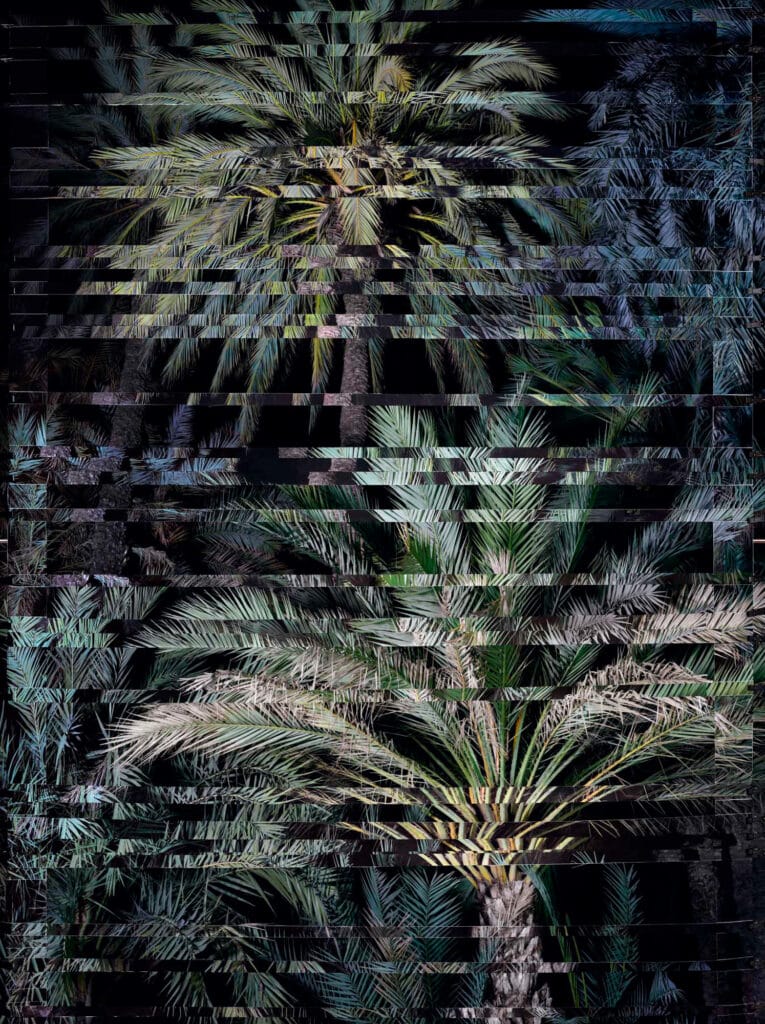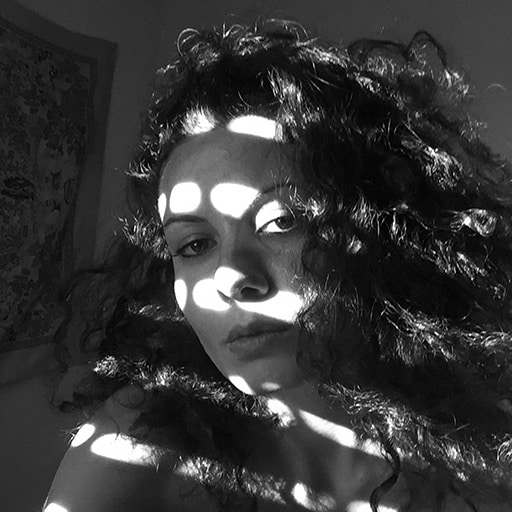In this interview, artist Noémie Goudal reveals the process behind her work Phoenix, exhibited at the Rencontres d’Arles festival, questioning the human notion of time, our perception of the environment and of the images we make of it.
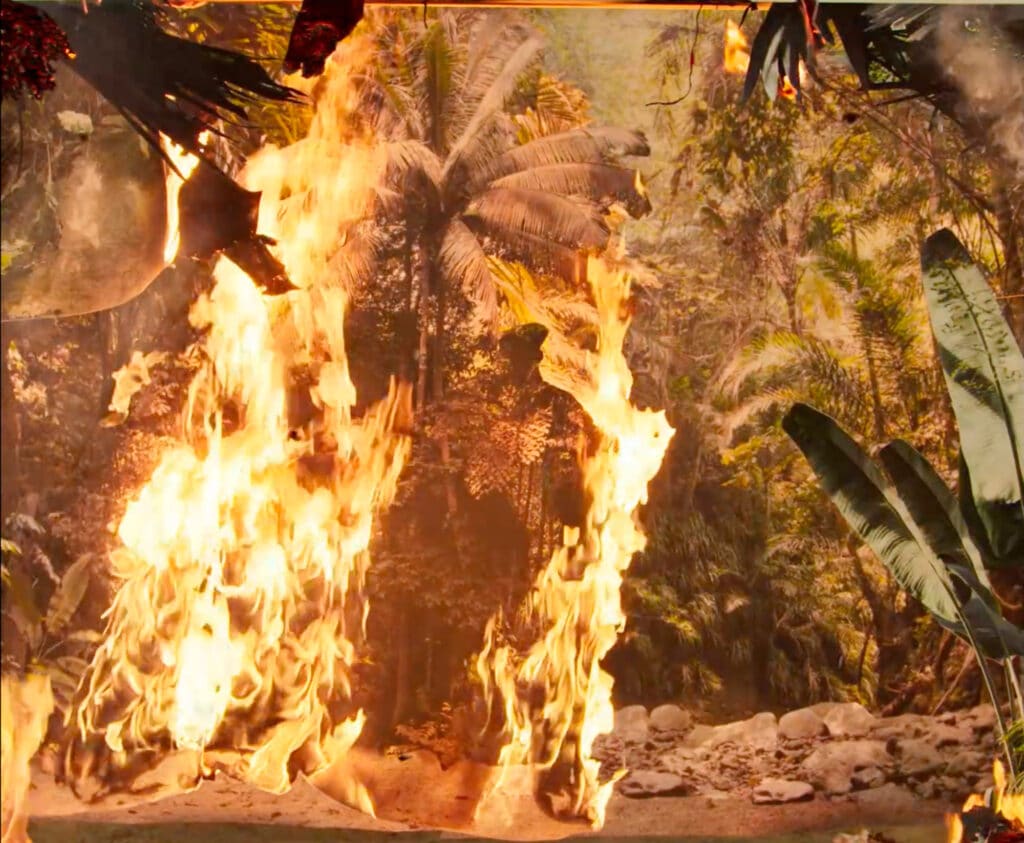
The title Phoenix makes me think of Greek mythology, the bird that dies in flames and is born again from its own ashes. What meaning does it have for you in relation to this work?
Phoenix, exhibited in Arles, is part of my broader corpus of work called Post Atlantica. This particular show is almost like a chapter of it. Phoenix is a very simple title because the work is about the study of palm trees and their role in paleoclimatology, and the scientific name for palm trees is Phoenix. Then there is the mythology, relating to the bird that was reborn from its ashes. It gives a sense of history through time, and my work is about studying time in the landscape. We normally identify ashes with “the end”, but then there is also something that comes after the ashes, and that’s what paleoclimatology is about. It’s about the transformation of one thing into another, into another.
The mythological Phoenix is related to fire, which you use in your artwork. The way fire develops is hard to predict, and I’m interested in the balance between the way you meticulously plan your shoots and the unpredictability of the natural elements you work with. Can you talk about this tension between planning and improvisation?
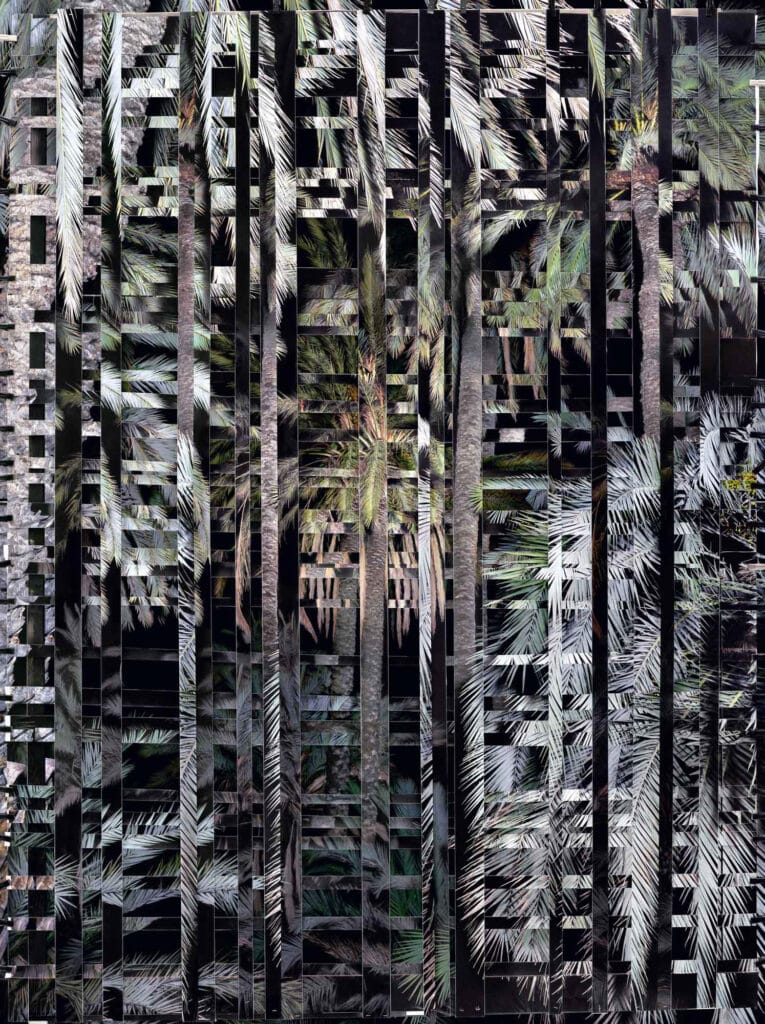
It’s a good question, because it’s really a mix of both. That’s also why working with fire is amazing, there are so many things you can’t plan at all in the way fire is going to go from one thing to another. It’s really difficult. So I plan everything to the best of my abilities and then the magic happens in a way. Sometimes it works, sometimes it doesn’t. Sometimes I have the sun coming, the rain, or the wind. And I have to work with that.
For many, photography is a solitary endeavour, while you need quite a few people working with you. Have you always been comfortable working this way or have you learnt from experience?
I learnt from experience and I’m not sure I’m the best at it, because it’s still really difficult. But in a way I love the atmosphere of a shoot, like the one of a film set. What I really like is working with experts in their own field. For example, I work with an expert in construction, an optical engineer, a director of photography who handles the camera, all things that I can’t do myself. Then we have a real discussion about what we want to make, and we do everything possible to achieve it.
Does having so many people around you change your perception of the landscape that you’re trying to photograph? Is it something that gets in the way?
I think the shoot itself is very different, it’s a very specific moment, and quite short. The connection to the landscape is something I look for when I do a recce. When I go to a place and I am on my own, or with my assistant, we see a place, we spend time there, we find what is it really that we want to do here. Everything happens before the shoot, during my research and at the moment when I find the location.
What were you looking for in the landscape that you chose for this body of work?
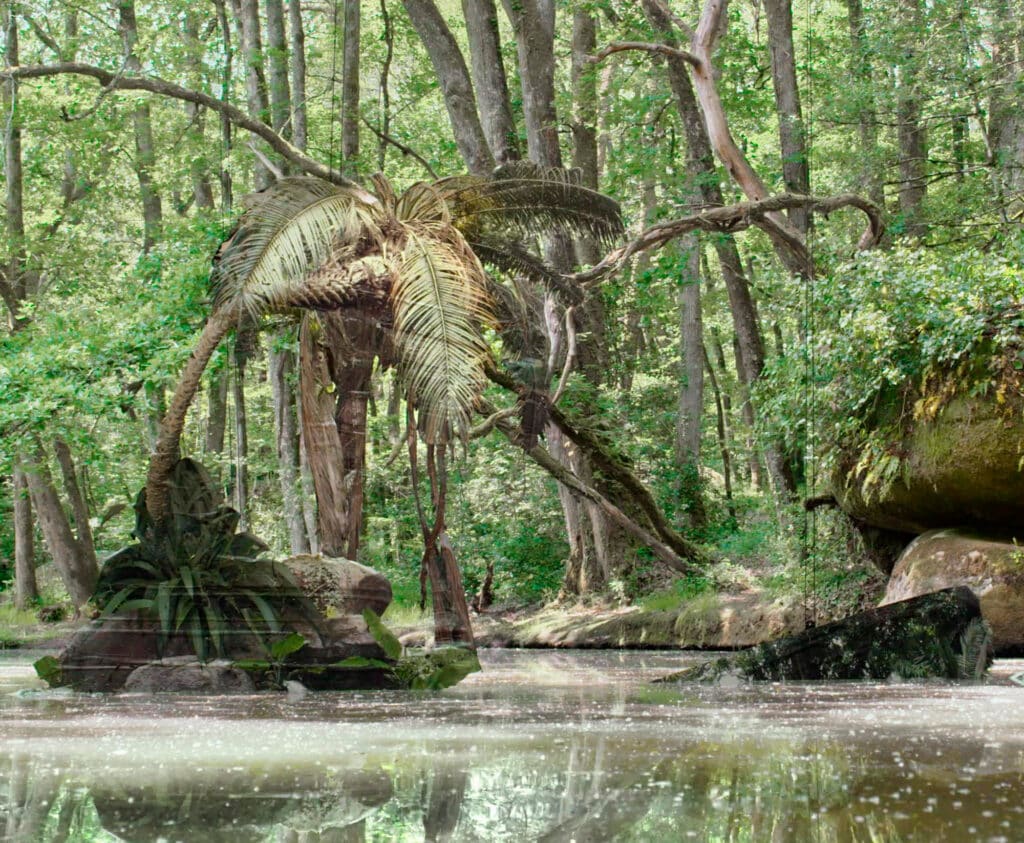
With Phoenix I knew exactly what I wanted. I needed a palm grove area and I went to find it. But sometimes I would go for a hike in the mountain and look for lots of different places, and I would be scouting for one specific idea and I come back with another. It really depends on the landscape.
Why palm groves, and which area of the world did you choose for the shoot?
The shoot was in Spain, but the area is not something that has a huge meaning for the work. What I’m interested in is how my image speaks to the public, the reference that it triggers in the collective consciousness and what it reminds us of, rather than what or where it really is. For me palm trees are related to this exploration of a land far away from everything, and also very specific to the equatorial area.
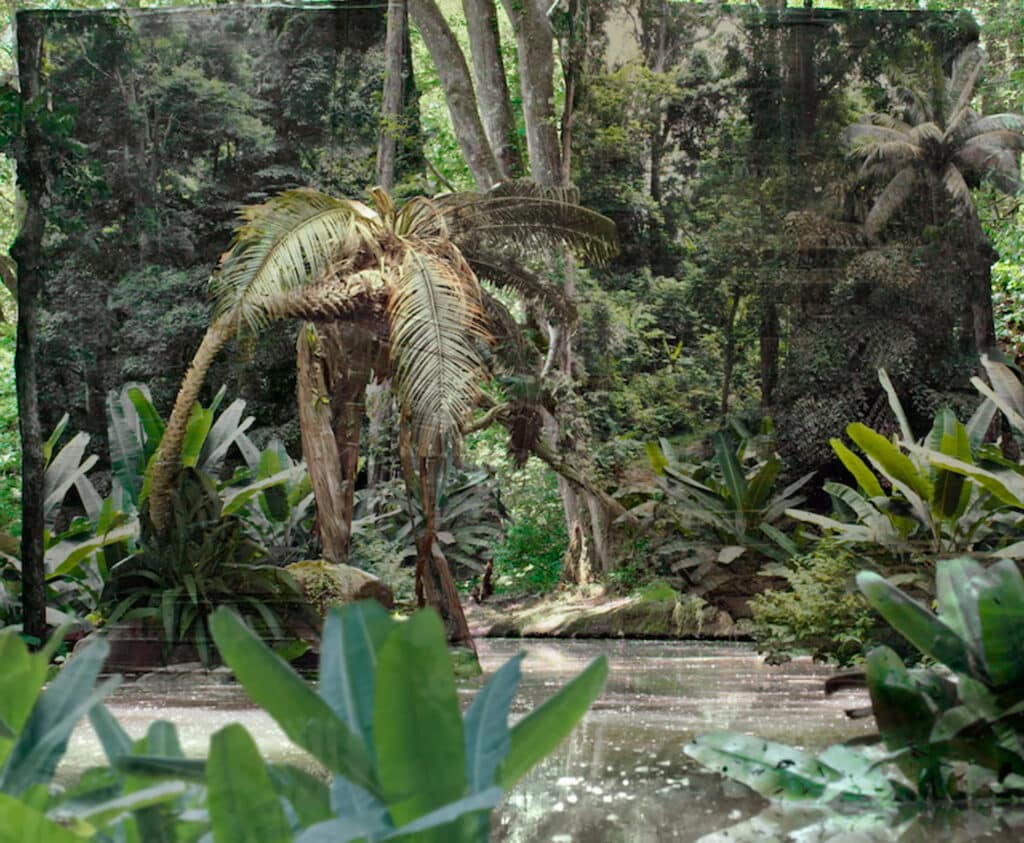
Knowing that this was shot in Spain is interesting to me though, because the fact that these images come instead from a more temperate, European area speaks about the gap between reality and the collective imagination.
Yes. Initially I was supposed to go to Morocco, then I opted for Spain, but I could have done it in a greenhouse, as long as it offered this illusion. I noticed that when I work in photography this idea of the real is so important because that’s how people believe in pictures, almost as a document of the place. When I work in cinema I still try to follow a protocol, keep some sort of truth in anything I do, but the people I work with that come from a film background always tell me “It’s cinema, you can do anything”. That’s why it’s so stimulating for me to work in both fields.
Through the layers you build in your images you create visible borders inside the natural environment, which is intrinsically borderless. It is what photography does all the time, isolating a rectangle of space and excluding everything around it, but we’re so used to it that we don’t even think about it anymore, it looks to us somehow just “the way things are”. I feel your photography wakes us up from this illusion, and at the same time it is a concrete effort to go beyond the rectangle. Can you relate to this?
Completely, because what I’m trying to do is decomposing all the structures, the layers of an image, going beyond the level of the print, or the frame. I’m trying to do this in the exhibition space as well. For example, for the show in Arles there are frames on a sort of grill and you can see through, so the prints are not even on the wall, they are almost free-standing.
Something else that I’m trying to do is bring photography into other media. For example, printed parts of my photographs appear in my films, because the films are fixed plans where the natural elements consume and destroy layers of photographs. Film and photography collaborate, and the work is about the evolution of an installation. I’m also working with sculptures made of the Sèvres ceramics, so I’m really trying to use different mediums, beyond traditional photography.
In your video Below to the Deep South, part of this exhibition, the illusion is that fire is destroying layers of vegetation, and in so doing it is revealing others. Your work is in part linked to environmental awareness. Is there a specific message that you would like people to take in?
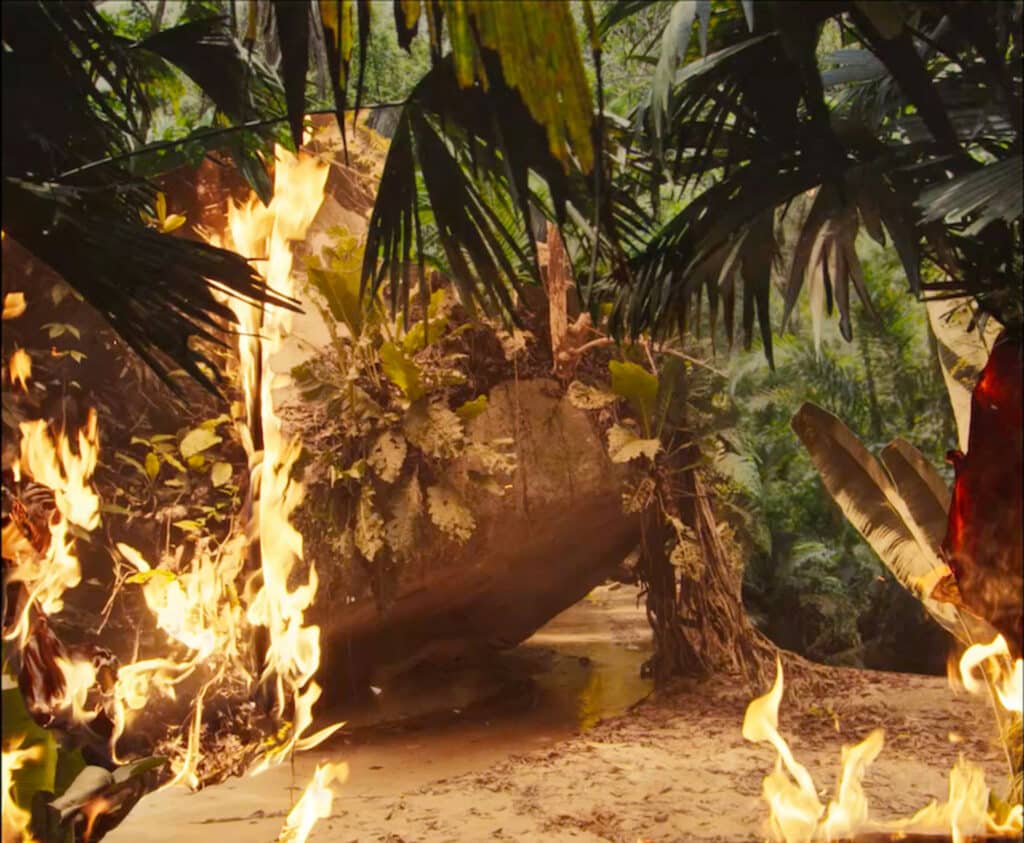
Everyone thinks about the burning of the forest when they see this film, which is fair enough, because it’s what it really looks like, but it’s not what this film was about for me. It is really about the discovery of the fossil energies at the bottom of the landscape and what all the stratas of landscape, one after another, are offering. Is also a reminder that the planet has created those precious sort of treasures over millions of years, and we burn them in such a quick time. The planet is 4.5 billion years old, the coal that in this particular film I’m talking about is made in 72 million years, and as humans we count time into hours and minutes. Those resources were produced during a time that is very much the time of the planet, not our time.
We also forget that the Earth is moving constantly, the tectonic plates are shifting, mountains are being deformed and eroded, yet for us it is all fixed in a way. We have our borders, our territories. A book that talks about this in a way that I found inspiring is Staying With the Trouble, by Donna J. Haraway. It’s a philosophical rather than scientific text, and it’s about this notion that the Earth is animated.
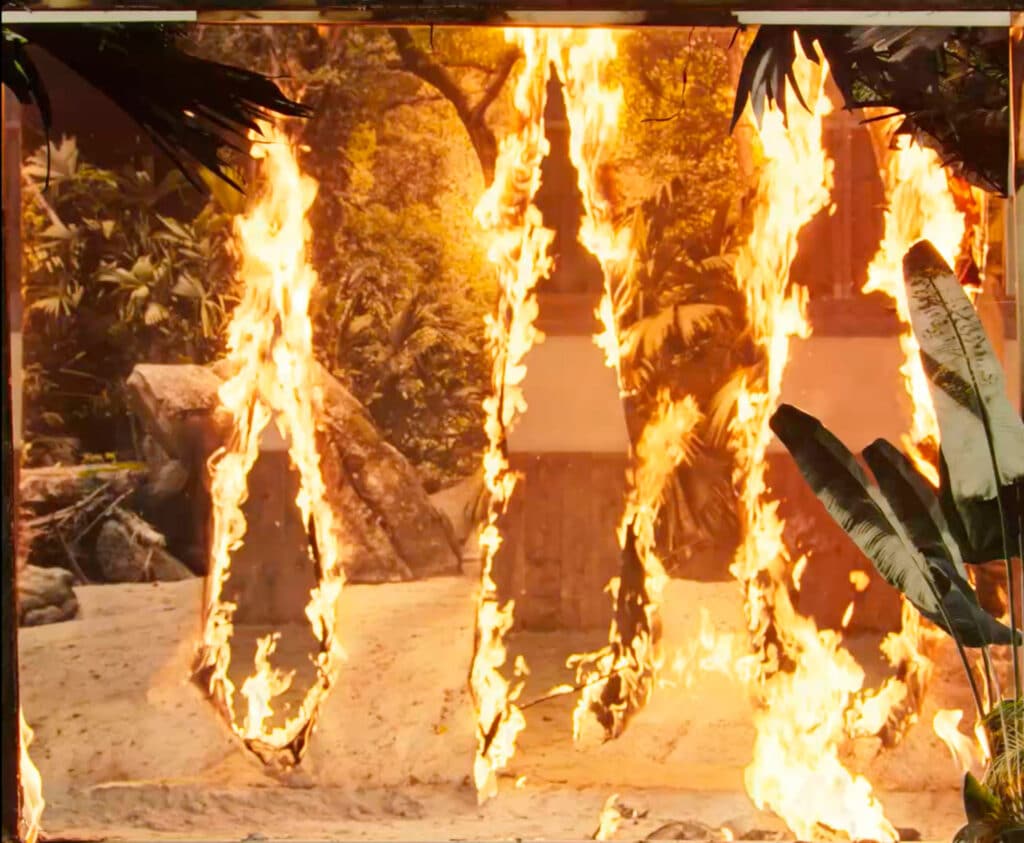
For your parallel installation during the Festival D’Avignon you collaborated with director and performer Maëlle Poesy. She will be performing live, adding a strong human element to your work, where we normally see only an indirect hint to human presence. Can you talk about this decision?
For this work, called Anima, I was thinking of how the research on paleoclimatology is really about the past climate in order to predict the future climates. It’s sort of an oscillation between what the past has been and what the future will be. In all of that moving, we wanted to have the present represented somewhere, and we thought there is nothing more powerful than a person, a woman, to do so. Within the installation, which is quite big, Maëlle hangs from the structure with just one arm, and she moves very slowly, in a way that it looks like she is walking into the air. Her work is so strong that it works as the embodiment of the present moment.
The exhibition “Phoenix” by Noémie Goudal is on view at the Église des Trinitaires, during the Arles Festival, until September 25.

